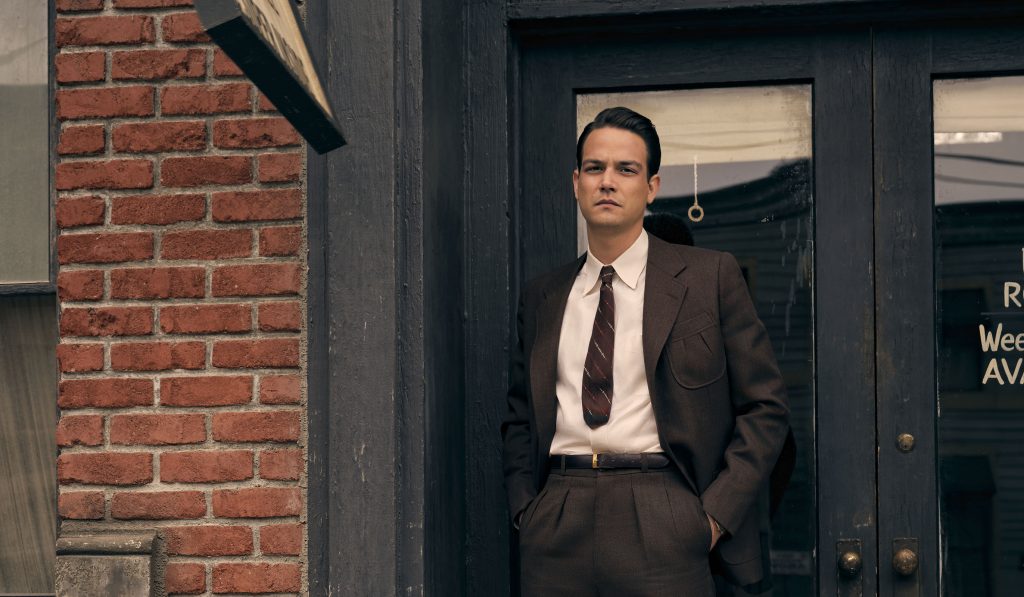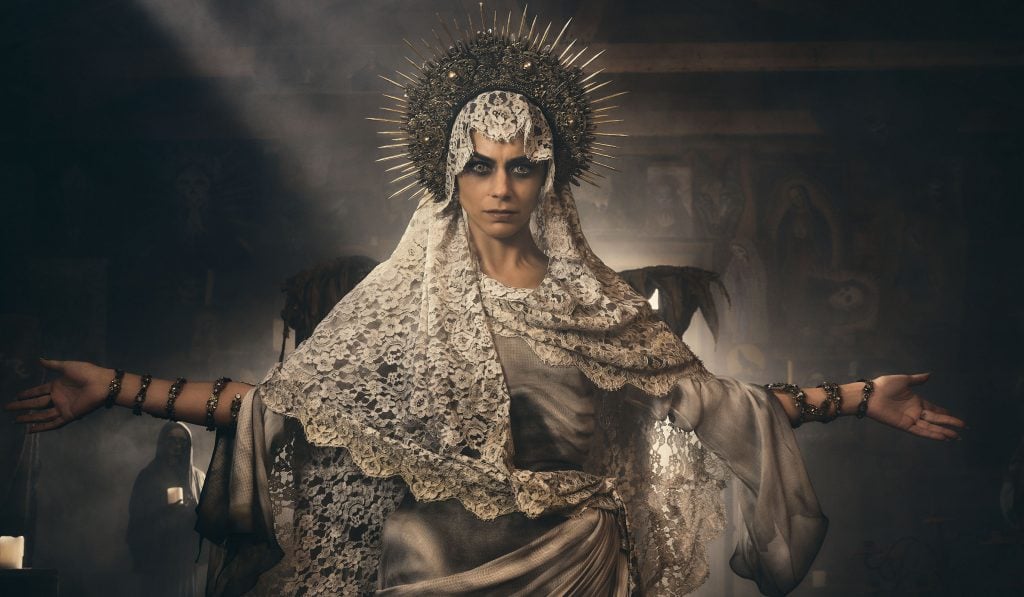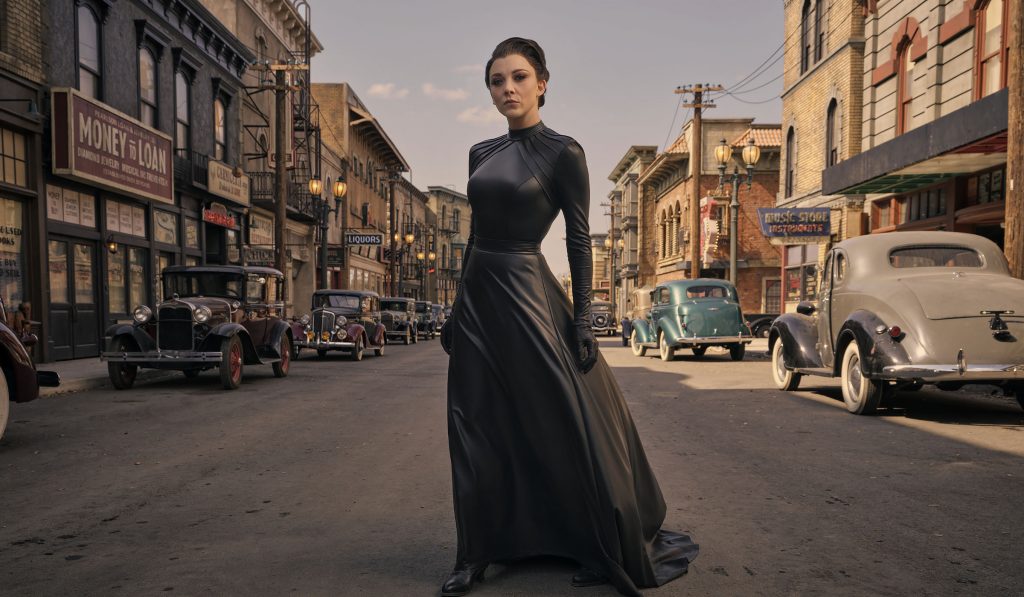John Logan’s original Penny Dreadful series is back, but this time around the US creator has swapped its murderous backdrop from Victorian England to Golden Age Hollywood.
Set among the social and political tensions of Los Angeles in 1938, Penny Dreadful: City of Angels is dressed in a stunning gothic cinematic veil – all while bridging a conversation between themes of racism, radical policing, the rise of the Third Reich and demagogues.
Billed as a ‘spiritual descendant’ of the original, Logan mixes folklore with historical reality and a hint of the supernatural.
Starring Game of Thrones’ Natalie Dormer – as dangerous demon Magda – looking to burn the city down literally and figuratively, and Rory Kinnear as a German physician; City of Angels explores the dark side of racial wars and religious worship in a world where everybody thinks they’re right.
At its core, this series is about the rise of political extremism, the irresponsible demagoguery and the very real power it has in threatening institutions too. There are themes of Anti- Semitism, xenophobia and an exploration of what it’s like to be a marginalised Latino group in America.
Penny Dreadful: City of Angels opens with a gruesome murder of an affluent white family, their corpses decorated in Day of the Dead costume.
The series follows Detective Tiago Vega (Daniel Zovatto) and his partner Lewis Michener (Nathan Lane) who are drawn into a plot of Mexican-American folklore, Nazi espionage and freeway corruption, and the city’s expansion of them. Mexican Chicano detective Vega joins the force and is the first Mexican-American to do so – he has his own racial battles to deal with.
Love Music?
Get your daily dose of everything happening in Australian/New Zealand music and globally.

Daniel Zovatto as Tiago Vega. Photo Credit: Jim Fiscus
But it’s the omnipresent aura of Mexican folklore saint – Santa Meurte [Our Lady of Holy Death] that proves all roads lead to Mexico. Even Detective Vega’s mother [played by Ariana Barza] has an altar dedicated to the saint in her home – a personification of death and associated with healing, protection, and the safe delivery of souls to the afterlife. Logan puts his own spin on Day of the Dead mysticism, but the Saint appears in a supernatural form here and divides the good from the evil.
Mexico’s Day of the Dead tradition is convincingly woven in the supernatural theme of the series. This is where peasant nostalgia for vivid folk tales and one’s religious faith are closely linked – even testing Detective Vega’s Latino connection to the folklore when he loses his own father in a fire and feels betrayed by Santa Meurte.
City of Angels taps into the racial tension between Latino groups and Americans – an issue that is uncomfortably relevant for a Trump-led America. We see racial clashes spurred by the building of motorways, which destroys the homes and livelihoods of Mexican-American families who occupied the area.
It is no coincidence that Logan has chosen LA’s freeway grid as a metaphor for what was happening in America a year before WW2 broke out.
On a recent press tour in the USA, Logan explained how the building of these grids was supposed to connect people to cities, but instead created something else for minority ethnic groups.

Lorenza Izzo as Santa Muerte. Photo Credit: Jim Fiscus
“What began as a civil engineering project turned in to a sort of de facto social engineering,” explained Logan.
“Because of these freeways, we no longer have a Sugar Hill, or Bunker Hill, most of North Main Street, Sonoratown. What we created are quarantined zones for ethnic minorities. So we have Watts, we have East LA. This pattern that began in Los Angeles was then replicated across the country.”
This was the era that also saw the birth of radio evangelism – which started in the 1920s and was in full force by the 1930s. Logan turned to LA radio evangelist celebrity of the 1930s and 40s, Aimee Elizabeth Semple McPherson, for his inspiration. He was intrigued by her status back then and how much power this woman had in her time.
City of Angels observes the rising of the Third Reich and Germany’s pro-Nazi organisation that was also doing the doctrinal rounds. There is a scene where Nazis rally in Pershing Square – it mirrors what happened in the mountains in Malibu where similar ceremonies were held; but Logan has also imagined his scenes with some historical footnotes.
It was also the era when many Nazi sympathisers and those who lived in LA continued to spread the word of Hitler, who himself was considering LA as a Stateside base of operations.
Is this a case of history repeating itself? You decide.
The brand new series Penny Dreadful: City of Angels is now streaming, with new episodes same day as the US, only on Stan.

Natalie Dormer as Magda. Photo Credit: Jim Fiscus





































